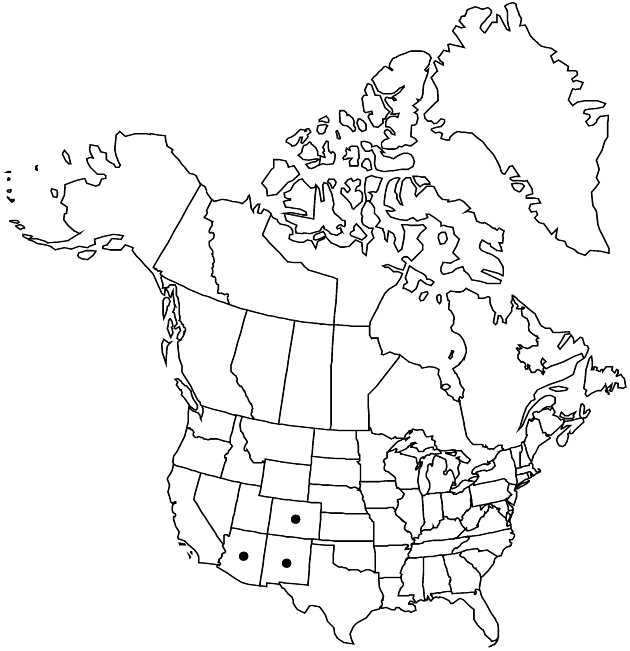Difference between revisions of "Dieteria canescens var. ambigua"
Sida 20: 1396. 2003.
Endemic
Basionym: Machaeranthera canescens var. ambigua B. L. Turner Phytologia 60: 77. 1986
FNA>Volume Importer |
imported>Volume Importer |
||
| (3 intermediate revisions by 2 users not shown) | |||
| Line 6: | Line 6: | ||
|place=20: 1396. 2003 | |place=20: 1396. 2003 | ||
|year=2003 | |year=2003 | ||
| + | }} | ||
| + | |special_status={{Treatment/ID/Special_status | ||
| + | |code=E | ||
| + | |label=Endemic | ||
}} | }} | ||
|basionyms={{Treatment/ID/Basionym | |basionyms={{Treatment/ID/Basionym | ||
|name=Machaeranthera canescens var. ambigua | |name=Machaeranthera canescens var. ambigua | ||
|authority=B. L. Turner | |authority=B. L. Turner | ||
| + | |rank=variety | ||
|publication_title=Phytologia | |publication_title=Phytologia | ||
|publication_place=60: 77. 1986 | |publication_place=60: 77. 1986 | ||
| Line 36: | Line 41: | ||
-->{{#Taxon: | -->{{#Taxon: | ||
name=Dieteria canescens var. ambigua | name=Dieteria canescens var. ambigua | ||
| − | |||
|authority=(B. L. Turner) D. R. Morgan & R. L. Hartman | |authority=(B. L. Turner) D. R. Morgan & R. L. Hartman | ||
|rank=variety | |rank=variety | ||
| Line 50: | Line 54: | ||
|publication title=Sida | |publication title=Sida | ||
|publication year=2003 | |publication year=2003 | ||
| − | |special status= | + | |special status=Endemic |
| − | |source xml=https:// | + | |source xml=https://bitbucket.org/aafc-mbb/fna-data-curation/src/2e0870ddd59836b60bcf96646a41e87ea5a5943a/coarse_grained_fna_xml/V19-20-21/V20_916.xml |
|tribe=Asteraceae tribe Astereae | |tribe=Asteraceae tribe Astereae | ||
|genus=Dieteria | |genus=Dieteria | ||
Latest revision as of 20:06, 5 November 2020
Annuals, biennials, or short-lived perennials. Stems 1+, ascending to erect, canescent, sometimes sparsely stipitate-glandular; branches ascending. Mid leaf blades lanceolate to linear. Peduncles equaling or longer than involucres. Involucres broadly turbinate, 8–12 mm. Phyllaries in 5–10 series, usually appressed, sometimes spreading, apices densely appressed-hairy, usually eglandular, sometimes sparsely stipitate-glandular, then obscured by appressed hairs. Ray florets pistillate, fertile. Cypselae glabrous or glabrate. 2n = 8.
Phenology: Flowering Aug–Oct.
Habitat: Grasslands and pine forests
Elevation: 1300–2600 m
Distribution

Ariz., Colo., N.Mex.
Discussion
Selected References
None.
Lower Taxa
None.